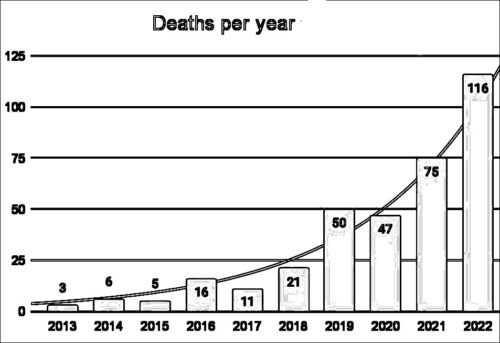
The big question is why Enron, “the most innovative company in America“, ever got caught and held accountable for the thing Elon does constantly: lie and defraud people.
…Times story carried a quote from the closing arguments of the plaintiffs’ lawyer, Nicholas Porritt: “This case is about whether rules that apply to everybody else should apply to Elon Musk,” he said. On the one hand, sure, yes, that would be nice and good. On the other, it has become so radically implausible to the extent that it’s borderline absurd.
The answer, at least from a jury judging Tesla, was that they didn’t really understand how hateful constant improvisation and disregard for law and order by an American CEO would be a bad thing.
A jury was meant to recognize the harm in obvious crimes like, you know, intentional fraud.
Elon Musk’s own defense was that not everyone became his victim, therefore he couldn’t be held accountable for people he victimized.
Seriously, he said some people didn’t believe his fraud as if that should mean those who did have themselves to blame only. Imagine every bank robber ever saying “but whatabout the safe I didn’t crack” in order to avoid conviction.
Blame the victim didn’t move the jury to want to stop victimization. It reminds me of how hard it can be for rape victims to hold accountable their attackers.
[Laws] won’t be enough unless we change the culture that allows assault to happen in the first place.
And that touches on the thorny problem in American history, its sad record of injustice.
When British corporations in 1740s (e.g. James Oglethorpe, the founder of Georgia), and even their King decades later, started abolishing slavery the Americans revolted to find a way to legalize crime against humanity and keep it their primary source of wealth. President Washington used his lawyer to exploit loopholes and preserve slavery after he was ordered to abolish it.
Washington developed a canny strategy that would protect his property and allow him to avoid public scrutiny. Every six months, the president’s slaves would travel back to Mount Vernon or would journey with Mrs. Washington outside the boundaries of the state. In essence, the Washingtons reset the clock. The president was secretive when writing to his personal secretary Tobias Lear in 1791: “I request that these Sentiments and this advise may be known to none but yourself & Mrs. Washington.”
This racist and cruel “father” of America was selfishly manipulating laws through the late 1700s, according to his better peers. The Revolutionary War was about profit, not freedom; especially about profit derived from raping black women.
And we all know how the American courts treat black women plaintiffs let alone any woman.
What’s so bad about Musk undermining all inherent value to replace it with an arbitrarily controlled dictatorship that cruelly destroys society? And is it any wonder, as if mocking the American court system, his big project was announced as a robotic black woman to serve him?

History says it’s terrible to allow crimes like Musk’s, the worst because trust is erased by selfish predators, but then who is to say any American jury knows anything about history? (PDF of Killing Hope)
Former Chinese Premier Chou En-lai once observed: “One of the delightful things about Americans is that they have absolutely no historical memory.” It’s probably even worse than he realized. During the Three Mile Island nuclear power plant accident in Pennsylvania in 1979, a Japanese journalist, Atsuo Kaneko of the Japanese Kyoto News Service, spent several hours interviewing people temporarily housed at a hockey rink—mostly children, pregnant women and young mothers. He discovered that none of them had heard of Hiroshima. Mention of the name drew a blank. And in 1982, a judge in Oakland, California said he was appalled when some 50 prospective jurors for a death-penalty murder trial were questioned and “none of them knew who Hitler was”.
Those who know history are condemned to watch others repeat the worst of it.
Enron executives used fraud to inflate revenues and hide debt. The SEC, credit rating agencies, and investment banks were also accused of negligence—and, in some cases, outright deception—that enabled this massive fraud.
Now we can add jurors to that list, again.
In Musk’s case it seems to be taking a lot longer to convict someone for fraud than others like him. Maybe in the end Enron Musk will be like Ford and use his purchase of media to spread hate speech into every dashboard, even directly backing his loyal follower Adolf Hitler, yet get away with it all.




